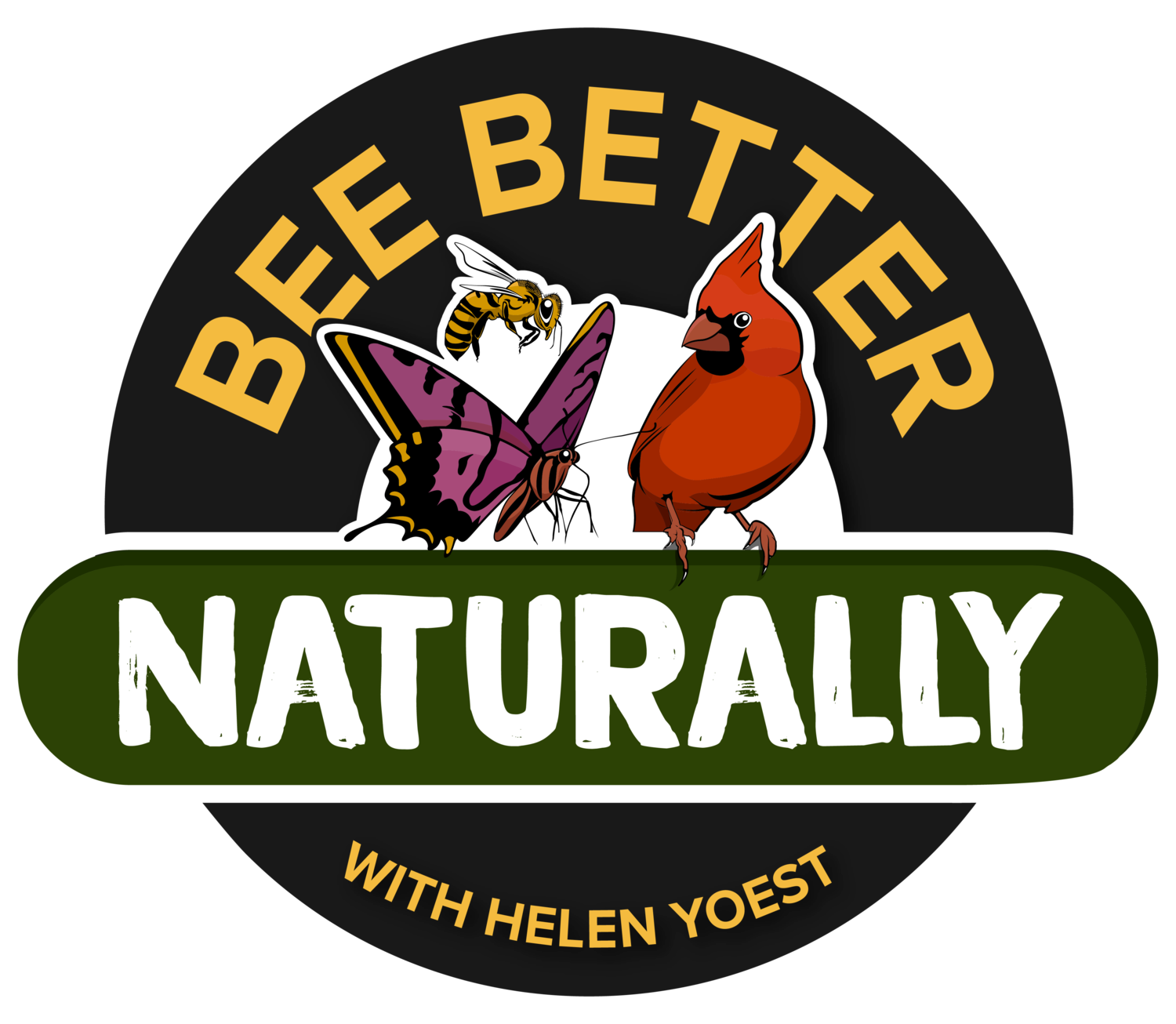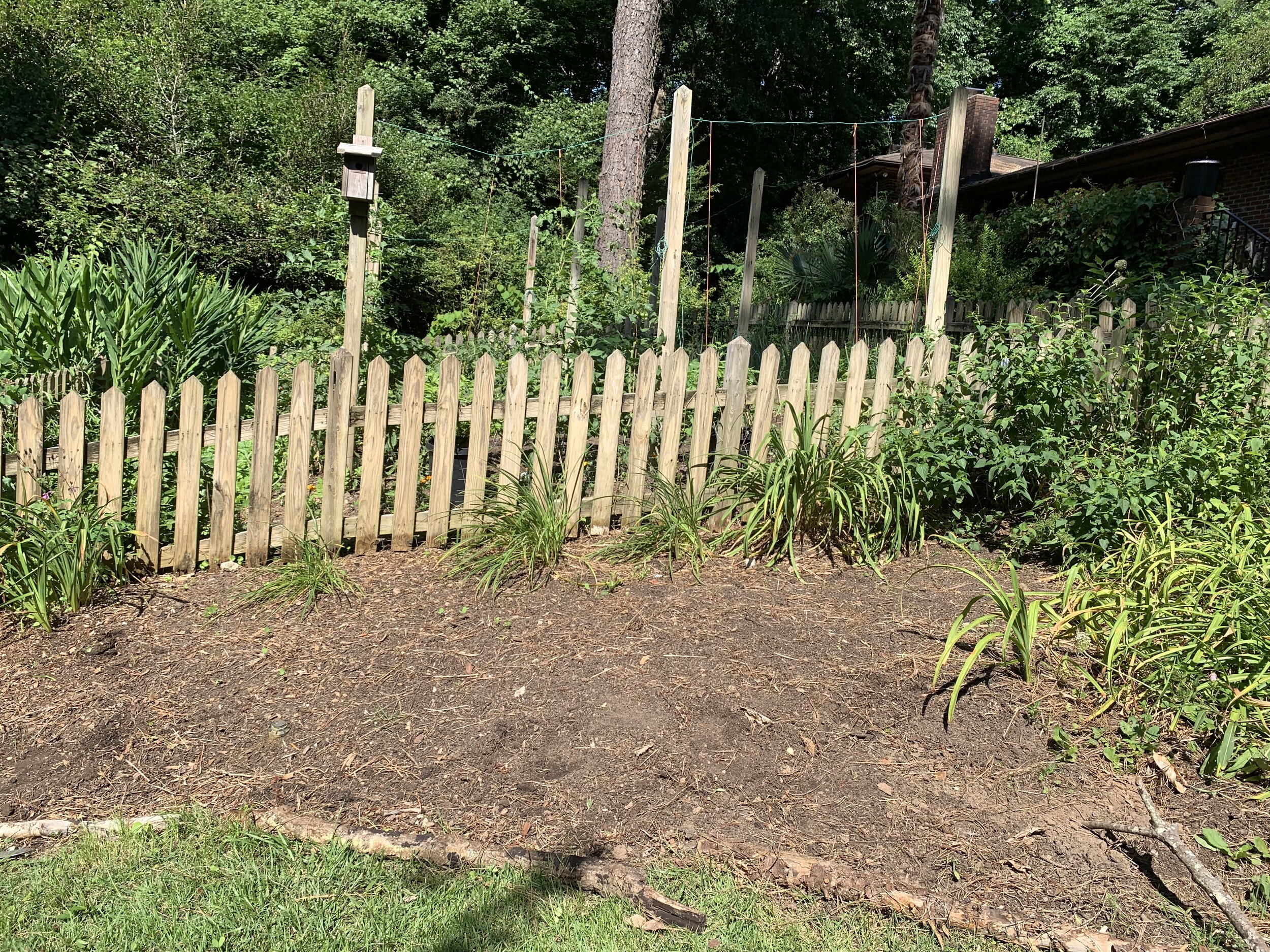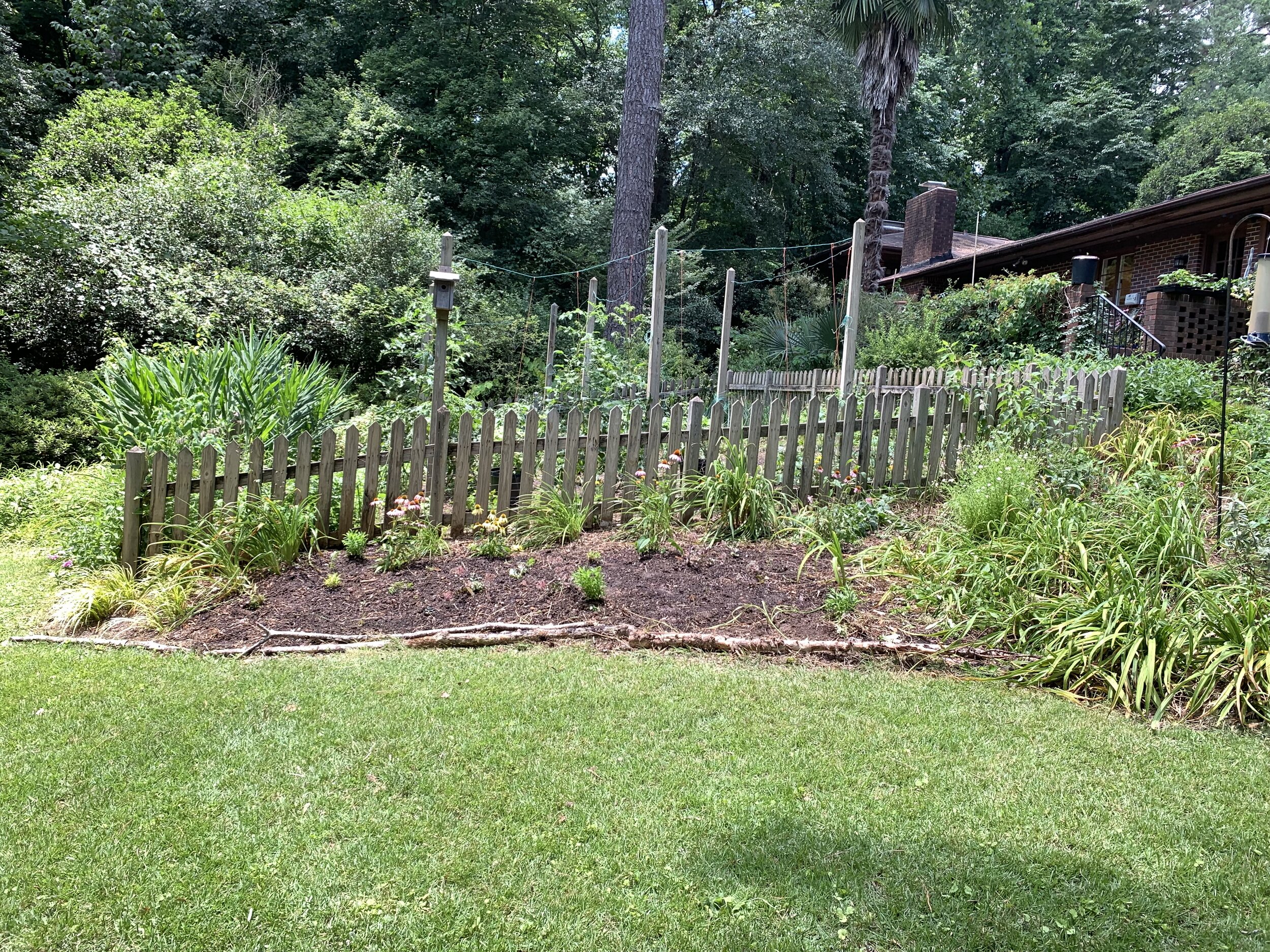Let me just start by saying, July (June & August, as well) is about the worst time to make a garden bed. But I did it anyway. You might remember, last week during #pollinator week, I commandeered a space that was a hot mess. There were a few great plants there, but they couldn’t be found through all the weeds.
New beds for pollinators—before weeding
The existing plants kept included daylilies, Hemerocallis spp.; Stock’s Aster, Aster Stokesia ‘Peachie's Pick’, hybrid blue salvia, Salvia patens, Jerusalem sage, Phlomis fruticosa, and lantana, Lantana camera; not sure which one it is…yet.
Through the heat today, Nell and I finished weeding a wider area of the soon-to-be bed.
Today was planting day!
From the City greenhouse, we added, garden phlox, Phlox ‘Minnie Pearl’; goldenrod, Solidago x ‘Little Lemon’; Sedum ‘Vera Jamison’; coneflower, Echinacea ‘Cayenne Spirt’; and an aster??
Shared from The Bee Better Teaching Garden, I brought several bee balm, Monarda didyma ‘Jacob Cline’.
Propagated from The Bee Better Teaching Garden, butterfly milkweed, Asclepias tuberosa; and ornamental onion, Allium hybrid‘Millenium’.
We’ll start with the above, and later move many of the daylilies to line the bed instead of being bunched up in primarily one area.
Also within the bed was this azalea, below. I needed help identifying it. I knew it was in the genus Rhododendron, thinking it was an azalea of some sort, but I was unfamiliar with it. And now know it as a Rhododendron Indicum but which one? With such tiny leaves, I would never have thought that! At this time, I’m still researching a cultivar, if there is one.
VOLUNTEER ART
In the meantime, Art continued limbing up. Next week, I’ll be sure to get pictures of our new vistas!
VOLUNTEER AILLENE
Aillene’s speciality is deadheading. A great skill to have. As I looked for a project for her to focus on, I decided the next best thing to deadheading was dead-stemming. Maybe there really isn’t such a thing, but when a large southern azalea, Rhododendron indica is accidentally sheared into a meatless meatball that is what it would take to reshape. It was a regrettable mishap, but it will grow back.
Note the beautiful azalea in the middle of the pathway.
Oops! Azalea after the mishap!
Aillene was maticulus and focused, and was able to shape the azalea to grow back into a more natural, pre-shearing state.
On a side note, starting next week, I will be taking the leadership roll of Program Coordinator of The Joslin Garden. This is such a great honor! We will continue with our weekly post, and will have additional educational pieces.
Helen Yoest
Environmental Scientist, M.S.








